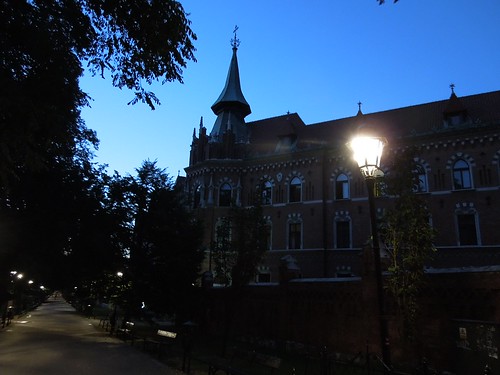I want to thank all of my followers for the many inquiries as to where the "two girls" have been. We have been enjoying our wonderful adventure living in Krakow for the month of July.
I can't express what a fabulous place Krakow is to live. A charming, cultured, intimate Krakow is full of quirks and surprises. Who would have thought that a city with a stern historic center would have such a diverse nightlife? That a horse and buggy could take you around to all of the sights? Or that a retro shopping center The Cloth Hall (Sukiennice), which dates from the 14th century, housing the original merchants, would have a wonderful view of the largest Medieval Square in Europe on it's rooftop cafe?Please don't change Krakow!!!! Even though there are several 5 star hotels and restaurants, we love you the way you are.


Krakow has a total population of 705,000. However that includes all of the outlying districts. The area that we explored has a population of 72,000. It was just a perfect size. We had an apartment that was within a 15 minute walk to the central square - Rynek Glowny. The average daily temperature was 82 degrees, with very little rain fall. As Texans, of course, we would not stay anywhere in July without air-conditioning. So, our 3 bedroom apartment was indeed air-conditioned, Texan style (65 degree indoor temp). We negotiated with the hospital next door, and for a small fee our car was parked in the lot with the ambulances and a 24 hour guard. Otherwise, most cars share the sidewalk with pedestrians.

HISTORY
The city's roots date back to the first millennium as a thriving market town. Of course it had the usual ups and downs related to religious strife,wars,natural disasters,plagues, and the occasional raid from Mongol hordes coming from the East. In the 13th century the city was razed to the ground by Tatars sweeping in from Central Asia, but is was quickly rebuilt. King Kazimierz the Great commissioned many of the city's finest buildings in the mid-14th century and established Jagiellonian University, the second university to be founded in central Europe - the first in Prague. Until 1596 Krakow was the seat of the Polish kingdom when Warsaw replaced it because of a political union with Lithuania which made it so large and difficult to travel from the north.
Poland was divided at the end of the 18th century and Krakow fell under the Austria-Hungary domination and was ruled from Vienna. The Habsburgs were far more liberal in their views than either the Prussians of Russia which ruled over other parts of Poland. The cultural Renaissance lasted well into the 20th century. Krakow was the bas of the late 19th-20th century Mloda Polska (Young Poland) movement e4ncompassing a revival of literature,art, and architecture that thrives today.
King Kazimierz first opened Poland to Jewish settlement. The Jewish quarter in Krakow named after him - Kazimierz, became a leading Jewish settlement in central Europe, as well as Catholic presence.
Krakow's architecture luckily escaped major destruction at the end of the war, but fared poorly in the postwar decades under Poland's Communist leadership. Krakow's charms are multidimensional. In addition to the beautifully restored Old Town, complete with its fairytale castle, there is the former Jewish quarter that has retained some of it's history in Kazimierz.
























No comments:
Post a Comment